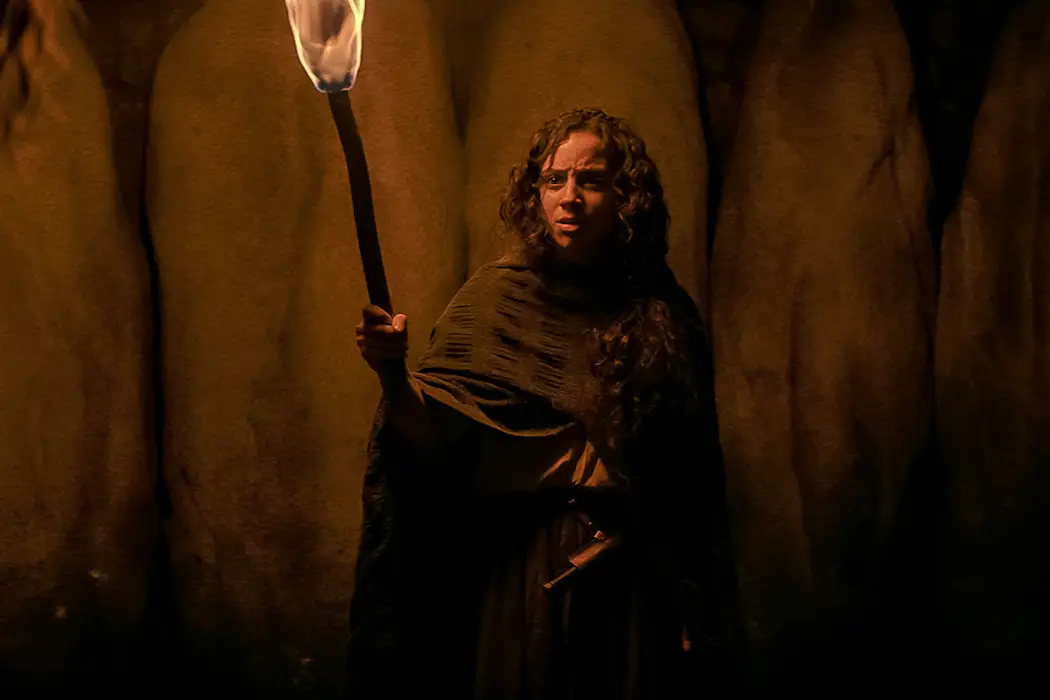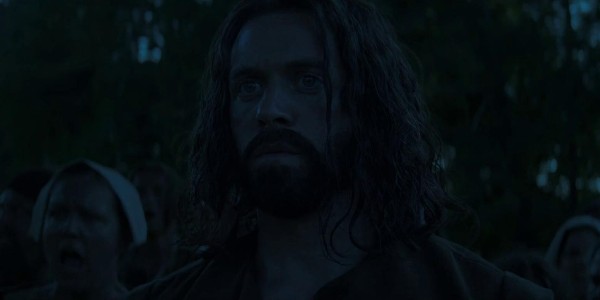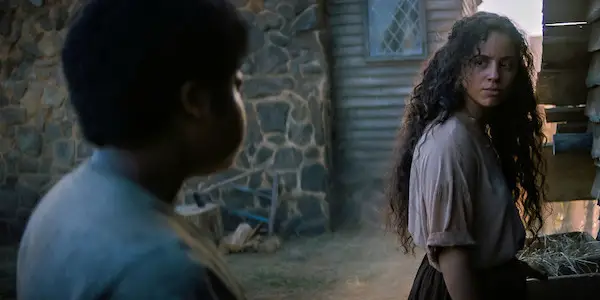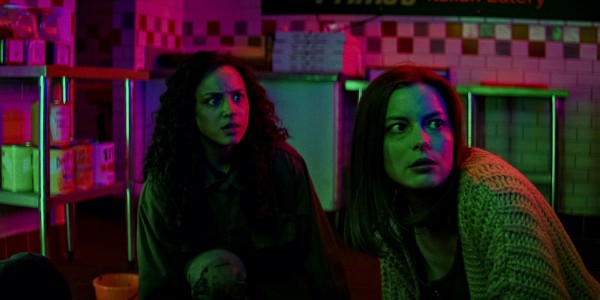FEAR STREET PART THREE: 1666: Perfect End to the Trilogy, but Leaves Room for More

Amanda Mazzillo is a writer with an MFA in Dramatic…
Fear Street Part Three: 1666, directed by Leigh Janiak and written by Phil Graziadei, and Kate Trefry, and Janiak, is the third installment of the adaptation of the trilogy of books by R.L. Stine. The film follows the story of Sarah Fier in her own time of 1666, tying together all the films by providing the backstory and shining light on the story we thought we knew.
Actors Given New Chances to Shine
This last installment shows the actors from the previous films taking over for characters in this puritan village setting. Deena (Kiana Madeira) imagines herself as Sarah Fier and sees all her friends taking different roles in Sarah’s story. Deena’s brother Josh (Benjamin Flores, Jr.) becomes Henry. Simon (Fred Hechinger) gives life to Isaac. Kate (Julia Rehwald) becomes Lizzie. Ziggy (Sadie Sink) and Cindy Berman (Emily Rudd) are puritan sisters Constance and Abigail. Sam (Olivia Scott Welch) brings life to Sarah’s secret girlfriend Hannah Miller. Sheriff Nick Goode (Ashley Zukerman) becomes Sarah’s betrothed Solomon Goode.
This Wizard of Oz style of double-duty allows each actor to showcase their vast talent and range. No matter how small the part in this 1666 section of the story, the performances stand apart and perfectly capture that era and the horror tropes connected to it.

Everyone does great accent-work and nobody ever feels over-the-top. The characters feel as if this is where they belong, allowing the audience to get sucked into the story and even though we know Deena isn’t really Sarah, we begin to see her as such and are engrossed in her story.
Olivia Scott Welch, Kiana Madeira, and Ashley Zukerman stand out in this 1666 era, giving emotional, dynamic, and challenging performances engaging the audience in the time period which is so vastly different from our own.
Focusing on Deena and Sam’s relationship through the lens of Sarah and Hannah allows us to feel sympathy and see into the heart of their LGBT struggle, something that remained a struggle even in their own time period of 1994. Their romance is memorable and given the time it needs to truly shine including multiple intimate and heartfelt moments.

Ashley Zukerman, playing the man meant to spend his life with Sarah, captures the quintessential self-hatred and self-importance of this horror subgenre and its ties to religion. His performance captures the time period and quiet horror of existence within that society so well.
This structure of the film works well to tie every decade represented in the trilogy together and also gives each actor more time to show just how talented they are by exploring vastly different eras and characters.
Perfect Blend of Horror Sensibilities
This final act in the Fear Street trilogy connects everything together beautifully, answering questions and providing emotional depth to established relationships we watched form throughout the previous films. Fear Street 1666 leaves 1666 and hurdles back to 1994 for its finale in a way that shows just how important the non-linear storytelling is for this trilogy.
When I first sat down to watch Fear Street 1994, I wondered why the decades needed to be told in reverse order, and this final installment works well to show just how important this method of storytelling was to the journey of each character. Fear Street 1666 tied everything together perfectly and is told in the exact order that it should be told.
By bringing the action back to present day, each character is yet again given more chances to shine. Gillian Jacobs as the grown-up Ziggy Berman does wonderful work, digging deep into her character’s trauma and willingness to fight for what is right.

Ashley Zukerman and Gillian Jacobs play just as wonderfully off each other as Sadie Sink and Ted Sutherland in Fear Street 1978, even though they are exploring a vastly different dynamic between Ziggy and Nick.
The final battle of the Fear Street trilogy brings back the 90s nostalgia in a big and bold way. Setting this showdown within the mall, covering the walls with backlight paint, and utilizing the mix of neon lights and shadows of a mall after dark, brings a unique and visually stunning atmosphere to this classic horror movie fight.
This stellar mall brawl sequence brings to mind the unforgettable pool scene from The Strangers: Prey at Night. Both utilize color, sound, and atmosphere perfectly to craft something you will not forget–and you won’t want to.
Fear Street 1666 ties everything up with twists and turns that are both surprising and well-hinted throughout the trilogy. Nothing in the twists and turns feels like it comes out of nowhere. There is much appreciated quiet menace in the performances throughout the film’s final 1994 act.
In classic horror fashion, this installment ends with a hint that more could come in the future. Like the shape disappearing from the yard in Halloween (1978), there is a mysterious and exciting final moment in Fear Street. Maybe another year, another group of decades could be explored.
Conclusion
Fear Street Part Three: 1666 is a perfect conclusion to this summer’s slasher trilogy. It ties up loose ends, but still offers a glimpse that this world has more horror to offer. This final installment features wonderful performances from the entire cast, especially Kiana Madeira, Gillian Jacobs, Olivia Scott Welch, and Ashley Zukerman. The bingeable trilogy structure is a perfect fit for Netflix and made for an amazing summer film event.
Do you think the weekly release film trilogy schedule worked well? Would you be interested if other films/genres explored the concept? Share your thoughts in the comments.
Fear Street Part Three: 1666 was released on Netflix on July 16th.
Watch Fear Street Part Three: 1666
Does content like this matter to you?
Become a Member and support film journalism. Unlock access to all of Film Inquiry`s great articles. Join a community of like-minded readers who are passionate about cinema - get access to our private members Network, give back to independent filmmakers, and more.
Amanda Mazzillo is a writer with an MFA in Dramatic Writing from SCAD and a BA in Writing & Linguistics and Film Studies minor from Georgia Southern University. She enjoys writing comedy and exploring all forms of media. Her Twitter name is a bad pun: @mazzillofirefox













